Innovations and Foundings
Applied acoustics and various other things
»It took five years to realize that the use of a computer can also be useful at a music university«
There were always situations where I thought this or that had to be tackled now. Either because it was missing or important, or simply because I was interested. Some things I managed on my own, but in many cases it was necessary to inspire fellow campaigners for the idea and then to establish something new together. With one exception, all initiatives have proven to be sustainable.
CONCERT ASSOCIATION VIENNA VOLKSOPERA ORCHESTRA
INSTITUT FÜR WIENER KLANGSTIL – FOUNDATION AND BEGINNINGS
BIAS – DIAGNOSIS AND THERAPY FOR WIND INSTRUMENTS
AAA – AUSTRIAN ACOUSTICS ASSOCIATION
EXPERT COMITTEE ACOUSTICS WITHIN THE ÖPG
ONLINE LITERATURE DATABASE FOR MUSIC ACOUSTICS
THE CLAVILUX
Looking back, it strikes me that without knowing it at the time, I anticipated national or international trends with some initiatives. One example of such an innovation from my youth was the “Clavilux”, which – because it was exclusively in the private sector – had no relevance in any way. It only shows that we realized an idea that only years later developed into an international trend.
It was around 1965 when the first thyristors came on the market. Transistors were already known and in use, but only in the low voltage range. Thyristors, however, could also switch high amperages in the 230Volt range. In my closest circle of friends there was a 3 years older guy, who already studied electrical engineering at the Technical University of Vienna and had routine in handling electronic circuits.
And it was the time of the private parties, which already anticipated the lifestyle of the famous 68ers. We were eager party organizers and took advantage of the absence of parents in our circle of friends who had been away for 1-2 days for some reason.
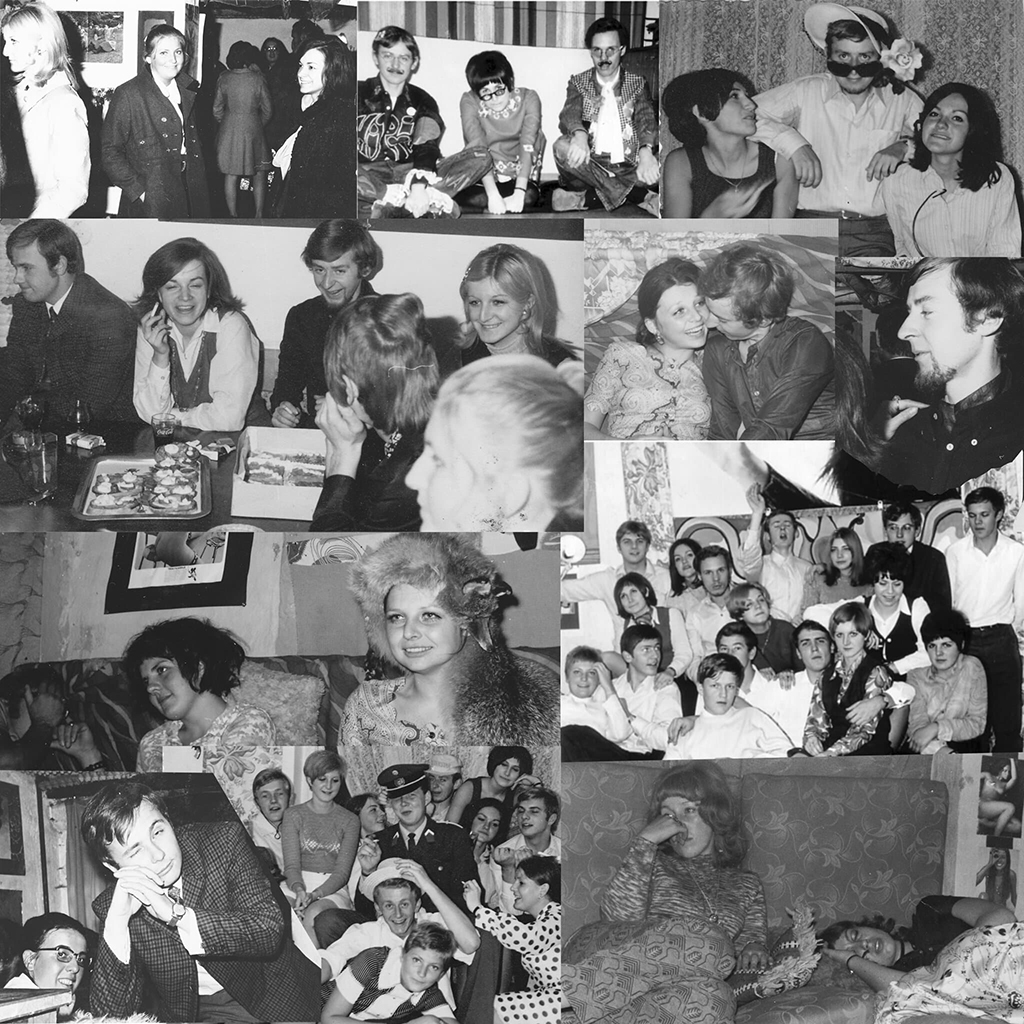
We procured posters or made them ourselves, organized appropriate seating and curtains to create a more intimate atmosphere, and carefully draped them in suitable rooms (mostly basements). I thought that instead of the usual dim light (UV lamps were also very fashionable at that time), the music signal could not only be directed to the loudspeakers, but also filtered and used to control different colored spotlights with the new thyristors. That would be something different, because up to now, we always had besides the UV-light, only a disk with glued-on electrical conductors made by myself, which controlled the colored headlights, but this was not correlated to the music.

After some experimentation by my friend it even worked and we could experience music and rhythm in color. Blue for the basses, red for the midrange and yellow for the high frequencies. Later, white was added for the rhythm. It was not until a few years later that similar devices, the so-called “claviluxes”, were found in all discotheques.
CONCERT ASSOCIATION VIENNA VOLKSOPERA ORCHESTRA
Musicians had and still have various “side jobs” in addition to their permanent position with one of the large orchestras. Some give lessons in their free time, privately or at music schools, conservatories or music universities, others are members of a chamber music ensemble or give solo concerts. These part-time jobs are not due to a lack of money – especially for members of the large Viennese orchestras – but enable the musicians to enter other genres or to do things that have always interested them.
In the 1960s and early 1970s, the Volksopera Orchestra was known for being big in the recording business. The two global players “Deutsche Grammophon” and “Decca” (London) had rented the Vienna Sofiensäle as a perfect recording studio exclusively the entire years and recorded classical concert repertoire, famous opera arias combined with overtures and complete opera recordings almost day and night, because there was an enormous need to catch up due to the interruption caused by the Second World War. The daily routine of musicians at that time was as follows: in the morning either a rehearsal with their own orchestra, or if not, a recording session from 10:00-13:00. In the afternoon a three-hour recording session and in the evening a concert or opera performance. Sometimes there were even night sessions due to time pressure, which meant: after the concert or opera performance, off to the studio and recording until one or two in the morning. In those days, the earnings from such side jobs were often higher than the monthly salary as an orchestra musician.
From 1969 I was allowed to play as a substitute on such recordings and received a fee of 350 shillings for a 3-hour session. That was an enormously high fee for me as a student. For a long-playing disk usually 10-12 sessions were estimated. That was also the time when I played for the first time with world stars like Luciano Pavarotti, Franco Bonisolli, Placido Domingo, Editha Gruberova, Lucia Popp, Edith Mathis, Cecilia Bartoli and various famous international conductors.

In the mid-1970s, the record recording business declined steadily, as most of the repertoire was “in the can” and the smaller and private labels serving the niche market migrated to the cheaper orchestras in Prague, Bratislava or Budapest. This hit the Vienna Volksoper Orchestra especially hard, because the State Opera Orchestra with its association “Vienna Philharmonic” had always focused more on concert cycles, tours abroad and the famous New Year’s Concert.
I thought that, following the example of the private association “Vienna Philharmonic”, our orchestra could again be better positioned as a concert orchestra and for foreign tours. The artistic potential and the international reputation were indeed present through the numerous recordings. Furthermore, my experiences with the “Johann Strauss Orchestra” association, an orchestra consisting of musicians from several Viennese orchestras, encouraged me in my efforts to found an association. In 1976, I took part with this orchestra in a 3-week tour of Canada, which took us from the far east of Canada, Chicoutimi and Quebec across the entire vast country, Montreal, Toronto, Ottawa, Winnipeg, Regina, Calgary and Saskatoon to Vancouver and Victoria Island in the far west. There I learned how to organize such extensive tours.
Despite different opinions and some fears in the orchestra, I succeeded with the remark that founding an association costs nothing and that we should just try.
So in 1978, together with two colleagues, I founded the “Concert Association of the Vienna Volksoper Orchestra” and immediately went to Robert Jungbluth, the General Secretary of the Austrian Federal Theater Association, who, as I already knew, was in the process of concluding the first guest performance of the Austrian Federal Theaters in Japan for 1979 with the Vienna Volksoper – even before the State Opera. I negotiated with him that we could subsequently give concerts in Hong Kong, Singapore and Bangkok. This convinced my colleagues of the usefulness of the newly founded association!
Subsequently, we completed several concert tours in Asia, either following a guest opera performance in Japan, or simply during the summer break, independently of the opera house. Mostly I took along 1-2 singing stars of the Vienna Volksoper, such as Mirjana Irosch or Adolf Dallapozza, who accepted with pleasure. Anyway, I was friends with Rudolf Bibel, an incredibly competent and sensitive conductor.
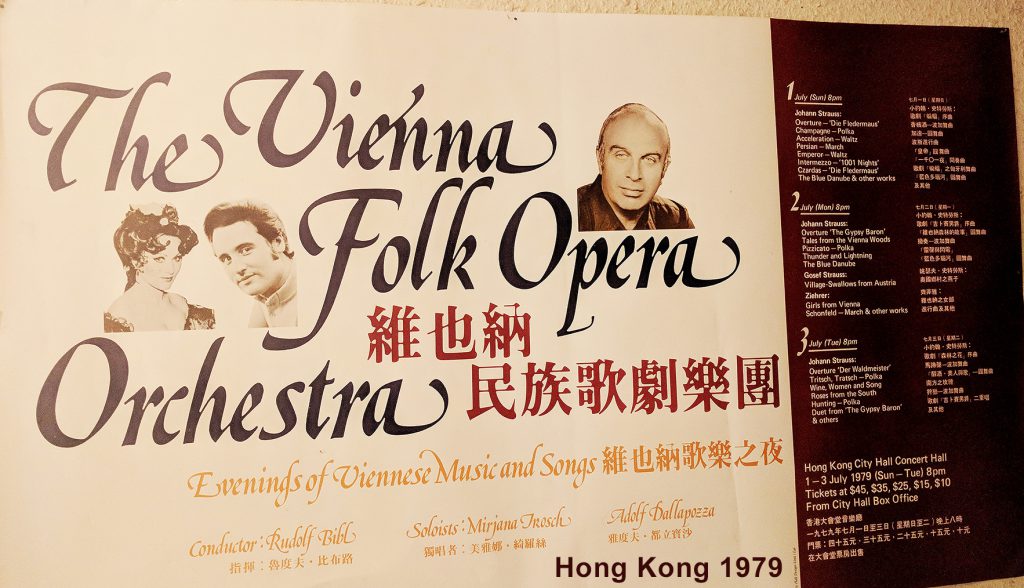
At that time I was immediately able to make a name for myself under the term innovations:
– It was the Volksoper Orchestra’s first concert tour to the Far East
– We were the first European orchestra to perform in Singapore
– And we were the first Austrian orchestra to perform in Thailand.
The tours all went off without a hitch – with two exceptions:
In Singapore I once had to cash-in the fee for the entire orchestra at a bank. Unfortunately there were several packages full of banknotes. I moved into a quiet corner of the customer room and began to count the amounts. The sum was correct. The next morning I was sitting in the hotel just having breakfast when a young man in a dark suit came to my table and handed me a package with the bank’s best regards, which was found yesterday in the bank’s customer area. I was struck by the blow – it was the equivalent of several hundred thousand shillings! Ever since that incident, Singapore has been inseparably linked to “honesty” for me. And from now on, I only ever cashed large amounts of money in connection with concert fees in pairs.
There was a problem in Hong Kong that was not my fault. On the return flight to Vienna, all the orchestra members were already on board when I was taken off the plane because the airline only now realized that the harp case (or one of the double bass cases, I don’t remember exactly) didn’t fit through the hatch of the airplane. Great. I tried with the responsible manager of Cathy Pacific, the official airline of Hong Kong, to rebook the box to other flights, which unfortunately didn’t work because the special destination was always served by the same type of aircraft. So at 5 o’clock in the afternoon I was standing alone at the Hong Kong airport, my colleagues were already on the return flight and tried to find a solution with the managers of Cathy Pacific. In the end, the box was brought to Vienna via London on a cargo flight for an extra charge and I landed in Vienna one day late (at no extra charge).
But Hong Kong also had another face, one that showed hospitality of the most extreme kind. On tours, apart from a few single rooms, the usual double rooms were the norm. As manager of the tour I naturally had a single room. Sometimes the hotel management also assigned me a suite. In Bangkok, for example, I didn’t live in the main building, but in the middle of a tropical garden of the hotel in a wonderful maisonette, in which Ernest Hemingway had already spent several weeks and which, with its luxurious mahogany furnishings, exuded the strange atmosphere of the colonial early 1950s.
So I was sitting alone at breakfast the morning after our arrival in Hong Kong (in the morning I need my rest and no half-blooded jokes from my esteemed colleagues) when a beautiful young Chinese woman came to my table and introduced herself under several bows as manager of the hotel. She handed me (with both hands of course) a corresponding business card and said that she was there to keep me at breakfast. Well, well, well! She sat down with me, actually had breakfast with me and discreetly involved me in conversations about Vienna and myself. On the one hand, I found the situation very strange and didn’t quite know what happened to me, but on the other hand, it wasn’t unpleasant. It was, as I later found out, a quite serious, free offer for VIP guests. She had her own office on the 20th floor and said whenever I am in the hotel and want company, I should simply call her. So to speak, conversational therapy without ulterior motives and nothing more. I have never experienced anything like this before or since.
Concert tours were important, but only a part of our activities. I got along very well with a Dutch music manager who was in his early 30s, just like me at that time. I was able to realize several large record projects with him despite the slowing record business.
A real innovation was to open the Vienna State Opera in the summer months of July and August, where it was normally always closed. It was Jungbluth’s idea to use the Vienna State Opera during the summer break in order to offer a high-quality experience to the already considerable streams of tourists in contrast to the often quite puny “tourist concerts” of private organizers, and to help the State Opera to gain additional income. And so, for two months, “Die Fledermaus” and “Die lustige Witwe” were given alternately at the Vienna State Opera. The orchestra was provided by us and the stage was managed by the Vienna Volksoper.This went really well for 2 (or 3 seasons), but was hired again, because the stage technicians of the Vienna State Opera, which partly went on its more lucrative “side businesses” in Salzburg at the “Salzburg Festival” in the summer, did not want to carry the double burden anymore.
However, the most popular side business for many colleagues in the 80s was the festive opening of the Vienna Opera Ball by our orchestra. For half an hour of “work” at the beginning of the ball one received 2 employee general free tickets with which, in contrast to normal ball visitors, one could move freely around the entire building and also enter locations secured by security without hindrance. Furthermore, the 4-digit fee was generous. Unfortunately, this kind of ball opening fell victim to a general structural reform at the end of the 80s (because it was probably too expensive).
INSTITUT FÜR WIENER KLANGSTIL – FOUNDATION AND BEGINNINGS
The prehistory and backgrounds.
As so often in life, the triggering element is something quite banal. The “Academy for Music and Performing Arts”, which was authoritatively led by it’s president Dr. Hans Sittner in accordance with the spirit of the time, was about to elect a new President in 1965. As I learned first hand in the 1980s in the course of research, Dr. Sittner wanted to be re-elected by the current heads of the 9 departments at that time and promised them that they were allowed to “make a wish” and that in the case of his re-appointment he would try to enforce these wishes in the ministry.
Six of the nine department heads wanted an institute connected to their department with whose help they wanted to document and process their discipline artistically and scientifically. Dr. Sittner was re-elected, and indeed, six(!) new institutes suddenly appeared in the 1966/67 Study Guide. One of them was the Institute für Wiener Klangstil (there exists no meaningful translation into English for the word “Klangstil”), a heart’s desire of the head of the wind department Prof. Dr. Hans Hadamovsky, solo oboist of the Vienna Philharmonic Orchestra, musicologist, composer and professor for oboe at the Vienna Academy of Music.
In the following six years until 1973, no activity has been reported from this institute – except for a reminder letter from the rectorate in 1971, which pointed out the obligation to prepare an annual report. The head of the institute, Hadamovsky, who was politely admonished in this way, responded with a 10-page handwritten letter in which he described in detail for the first time the scope of the institute’s activities and the problematic situation of musical instrument making in Vienna. He commented on his duty to report that “although no work has been done at the Institute since its founding, no costs have been incurred and no room has been taken up” [end of quote].
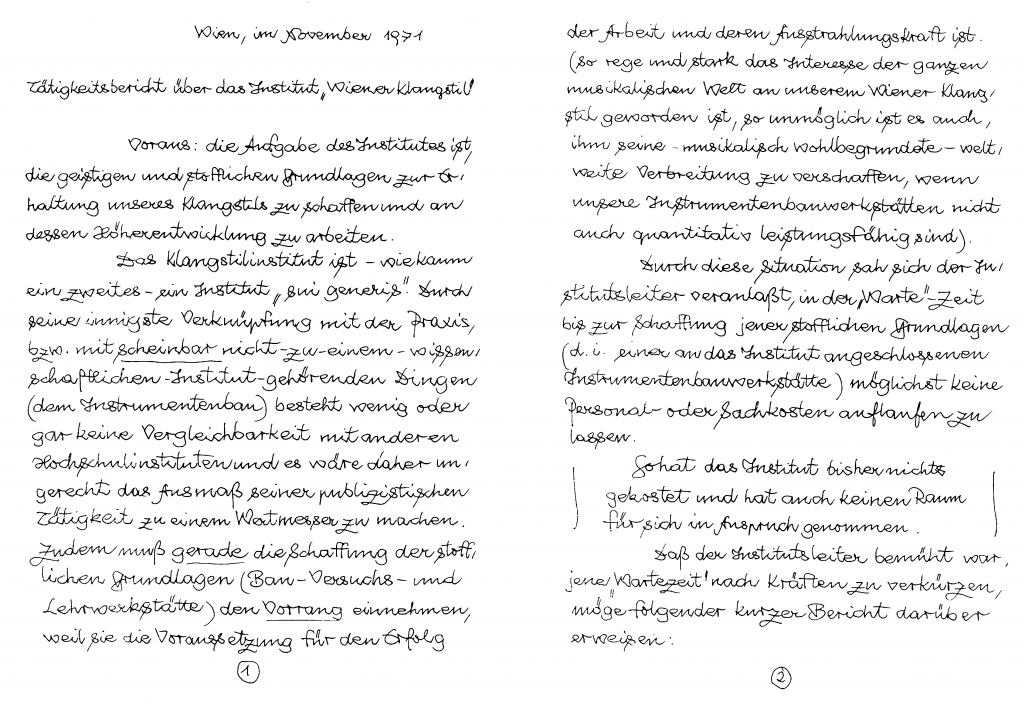
In 1973, Hadamovsky then published a 3-volume work “Der Wiener Bläserstil” (=the Viennese way to perform classical music with wind instruments), which he wrote by hand in DIN A4 format, and called it the “Outcome” of the Institute. From 1974-1977 Günter Lorenz, also an oboist and son-in-law of Hadamovsky, worked at the Institute as an assistant with the task of “Wiener Rohrbau” (= the way of making reeds for the Vienna Oboe). After that, the institute was again only an empty virtual shell.
The reactivation as a result of a veritable instrument making crisis.
As already indicated in the above-mentioned letter by Hadamovsky, some instrument groups of the Viennese orchestras (The Vienna oboes, Vienna horns and Viennese trumpets) slid into an extremely precarious situation in the mid-1970s: since the majority of the instruments used were built around the turn of the century, or at the latest in the interwar period, they had reached the end of their life cycle, literally disintegrated under the hands of the musicians and could no longer be repaired. However, since these instruments were only played in Vienna, one could only turn to the Viennese instrument makers for new instruments – there was simply no international market for them. The beginning was made by the horn players. Unfortunately, the newly built instruments were so bad, especially with regard to intonation, that they were declared unusable by the musicians of the Viennese orchestras.
The instrument makers concerned justified themselves with the high time expenditure of a new construction and an alleged lack of profitability. In response, the Vienna Philharmonic organized financial support from the union and the City of Vienna, whereby each of the three manufacturers concerned received about 50,000 Shillings as a subsidy. However, the instruments that were subsequently newly built were just as bad as the first tranche.
The trumpeters then tried a different approach: At that time Japan was known worldwide for its perfect copies of Western products. Since the Vienna Philharmonic Orchestra was already in Japan every year for concert tours at that time, they took the best of their trumpets, a Heckel Bb trumpet, and made it available to the Yamaha company in Hammamatsu for copying. At that time, the instrument was still measured manually, but meticulously to the nearest tenth of a millimeter. They then fed the data to their new CAD software and discovered that the diameter very often fluctuated over the course of the instrument, apparently without motivation. Yamaha attributed this to inaccurate working methods on the part of the instrument maker, smoothed the bore, produced the instrument precisely with the then new CAD-CAM machines and proudly sent it to Vienna. The reaction was painful for Yamaha – the copy was much worse in intonation than the original! Today we know why: because the intonation was optimized with the slight changes in the bore at certain points. This did not happen because of acoustic expertise, but because of centuries of practical experience according to the “trial and error principle”.
So what to do? In this muddled situation, the idea was born that I, who was a horn player myself and had also studied at the University of Technology Vienna, could take up the matter scientifically and perhaps give the Viennese instrument makers some sound advice. Prof. Gabler, my former teacher and as solo horn player my seatmate in the orchestra was now head of the wind section at the University of Music and thought, that the orphaned “Institut für Wiener Klangstil” would be a good place to start.
The surprising thing about this consideration was that in the 1970s there was still a latent hostility to science in art and especially in music. One example of this is a statement made to me by a trumpet professor and member of the Vienna Philharmonic Orchestra during an informal, collegial conversation in the corridor of the Musikhochschule. He said: “You know anyway, there are good musicians and there are intelligent musicians!” I was very indignant at the time about this ignorant view, but I did not dare to contradict it and simply did not react to it.
Because there were not only conservative-reactionary, but also very progressive and open-minded people at the Musikhochschule, it was decided to give “science” a try. A corresponding application was submitted to the ministry with reference to the empty shell of the Institut für Wiener Klangstil and the available room and financial means (which was not quite true), and was promptly approved.
Now it was important to act quickly: A head of institute and a room had to be found. Prof. Gabler, the driving force behind the project, explained that in addition to his orchestral service, his teaching activities and his position as department head at the Musikhochschule, he would not be able to take over the management of the institute.
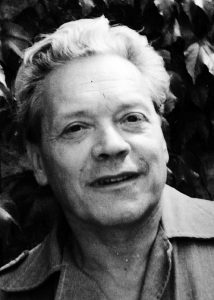 Eduard Melkus, Professor of Violin, international soloist and director of the Capella Academica Vienna, of which I had been a member since 1974, agreed to provide a small side room of his huge classroom in the former Franciscan monastery in the Singerstrasse (3 minutes walk distance to the St. Stepahns Cathedral). And although the reactivated institute was part of the wind section, but he was a member of the string section, he would also be available as head of the institute if desired. Because he simply considers the idea of approaching the problem scientifically interesting and worthy of an experiment. He would give me a completely free hand and not interfere in my decisions. After his retirement, Prof. Hans-Maria-Kneihs took over as head of the institute, which he did with the same reticence as Prof. Melkus. He even succeeded in 1998 in converting an unfilled position into a professorship for musical acoustics in the Ministry.
Eduard Melkus, Professor of Violin, international soloist and director of the Capella Academica Vienna, of which I had been a member since 1974, agreed to provide a small side room of his huge classroom in the former Franciscan monastery in the Singerstrasse (3 minutes walk distance to the St. Stepahns Cathedral). And although the reactivated institute was part of the wind section, but he was a member of the string section, he would also be available as head of the institute if desired. Because he simply considers the idea of approaching the problem scientifically interesting and worthy of an experiment. He would give me a completely free hand and not interfere in my decisions. After his retirement, Prof. Hans-Maria-Kneihs took over as head of the institute, which he did with the same reticence as Prof. Melkus. He even succeeded in 1998 in converting an unfilled position into a professorship for musical acoustics in the Ministry.
In 1980, I was overjoyed in any case, because after passing my diploma examination I naturally had to leave the Musikhochschule in 1975. But it was part of my life and I missed it very much! I painfully missed the many contacts, daily events, the impressive, concentrated artistic competence of the internationally renowned teaching staff and, last but not least, the vibrating, music-flooded atmosphere of such a house. I found myself thinking about what I could do to reconnect with the house again, at least through a 2-hour teaching assignment. This was no longer necessary, because to my surprise the ministerial approval did not contain a teaching assignment, but a full-time assistant position!
The first 3 years.
So in January 1980 I stood in a room measuring about 2.5 x 7 meters, whose inventory consisted of a simple cupboard and an ancient, beautiful solid wood pharmacist’s desk with countless drawers and even a secret drawer. There was no seating available, I had to get an armchair from the violin class in front of it. That didn’t bother me, because contacting of musical instrument acousticians was more urgent now. I had already checked Austria in December 1979 without success, and even at the technical universities everybody was astonished that such a thing like music acoustics should exist.
Internationally, I found only three points of contact: In Germany the group around Jürgen Meyer, which was based at the Physikalisch-Technische Bundesanstalt in Braunschweig and gave me a lot of valuable input. In England, in Cardiff (Wales), a lonely fighter who did some great research on the vibration behavior of the guitar body, and in the USA, a then already famous lonely fighter, Arthur H. Benade, who, like the German group, covered the entire spectrum of musical instrument acoustics. It was not until years later that I learned that there were also highly active music-acoustic groups on the other side of the Iron Curtain in the GDR and Czechoslovakia, some of which were supplied with new Western technology by the Germans. I got in contact with the Czech groups and some of them developed real friendships.
After this first round of orientation, the development of suitable measuring methods was on the agenda. Unfortunately, an “artificial player”, which I had built after the German model, did not solve the measuring problem and an input impedance measuring method, which I developed with equipment from the then Danish world market leader Brüel&Kjaer, cost a fortune and was not financially affordable for me.
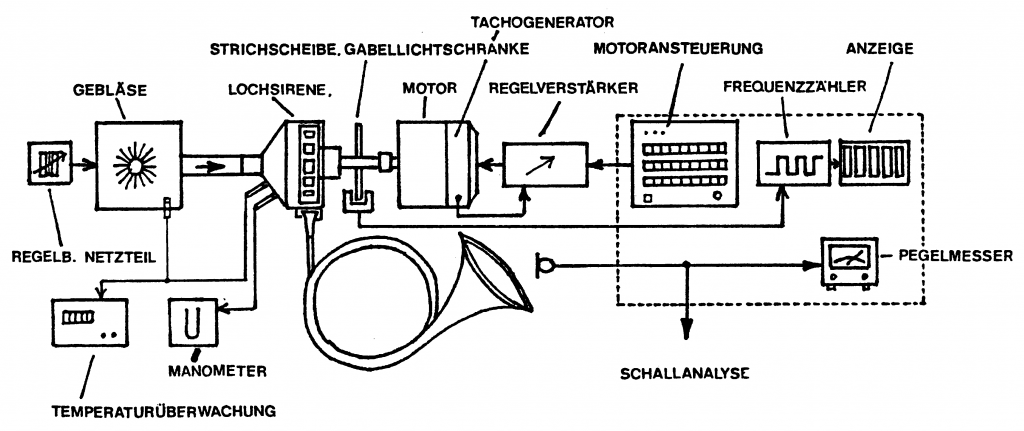
Schematic representation of the artificial wind instrument player

Artificial player general view Detail: Rotor with hole siren Electronic control
Salvation in times of need came from Dipl.-Ing.Gerald Sonneck, who played bass and cello at the Capella Academica Wien, but his main job was in the construction of the Zwentendorf nuclear power plant as a full-time nuclear physicist and had a little more time after the forced stop in in Austria 1978. Since I was completely inexperienced with applications to research funds, he helped me with the conception and writing of a project application to the FWF (Fonds zur Förderung der wissenschaftlichen Forschung) with which I wanted to finance the 450,000 Schilling Brüel&Kjaer devices.
The fact that my application for review and support at the FWF was not assigned to a physicist but to a sociologist from the humanities showed that even at the FWF, one did not know how to deal with music acoustics. However, thanks to Gerald Sonneck’s help, the application was successful and together with him I was able to gain the first fundamental insights into the acoustics of the Viennese horns.
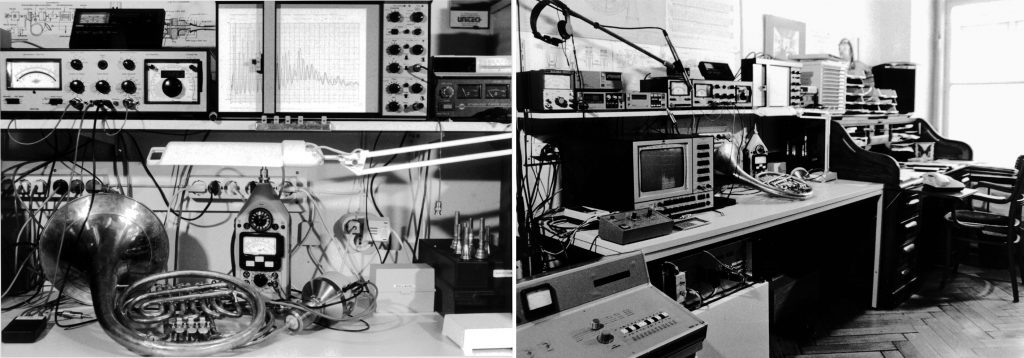
Impedance measurement setup on analog basis financed by FWF General view of my first institute room
The devices financed by the FWF were extremely precise and perfectly matched, but “analog”, i.e. the acquired measurement data was recorded in the form of an impedance curve on pre-calibrated paper (see figure). Further processing of the data was only possible to a very limited extent. One had to read the values off the paper, enter them manually into one of the Texas Instruments hand-held calculators commonly used at that time and then perform a few self-programmed mathematical operations. This was not sufficient for the required analyses. A computer was needed!
So I made an appointment with the responsible ministry to apply for the purchase of a personal computer, as it was required at that time for all investments that were above the negligible limit. This gave me an unexpected and extremely curious experience.
1982 Computer versus Bösendorfer.
When I presented my application to the responsible ministerial head of division for the purchase of a computer after a detailed explanation of the reasons, he looked at me in silence with big eyes for a felt minute, then swayed his head thoughtfully and said “No“. He said that I am at a music academy and that no computers are planned there. I tried to explain to him again what it was all about, but he stuck to his “No” and said: “If you need a Bösendorfer concert grand piano for your work, I will gladly approve the purchase, but a computer is out of the question!
That was plain language. I therefore decided to invest five monthly salaries in the continuation of my research work and to privately purchase an IBM personal computer including a small color monitor and b/w matrix printer and make it available to the institute. The first flutist in the Volksoper Orchestra had a relative who worked at IBM, and so I was able to purchase the entire system for 67,000 Shillings instead of 120,000 Shillings with the help of an “employee discount”. It was the latest model from IBM and even had two 5 ¼ inch floppy disk drives! One for the system disk and one for data storage. Hard disks did not exist at that time. With an additional payment I increased the RAM from 4 kB (=kilobyte) to 16 kB. About the order of magnitude: this is the ten millionth part of today’s usual main memory size…
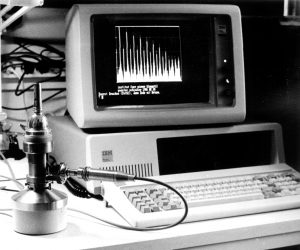 So now I owned the first and only computer at the Vienna Musikhochschule! In joyful anticipation I turned on the PC, inserted the DOS system disk into the drive – and saw nothing but a black screen with a white blinking cursor in the upper left corner.
So now I owned the first and only computer at the Vienna Musikhochschule! In joyful anticipation I turned on the PC, inserted the DOS system disk into the drive – and saw nothing but a black screen with a white blinking cursor in the upper left corner.
The next problem was to be solved! Since there was no user interface in today’s sense at that time, you had to program something like that yourself with the few available DOS commands to start a program or display data. Since I had only a vague idea how to do this, I looked for contact to the TU-Vienna and found a competent contact person in Dipl.-Ing. Dr. Heinrich Pichler, who agreed to introduce me to the secrets of programming. He should then continue to work like Dipl.-Ing. Gerald.Sonneck as a valuable and indispensable part-time employee of the institute for several years.
1987 The bursary and ministry change their minds.
It took another 5 years before they came to the conclusion that the use of a computer could be useful even at a music conservatory. I was helped by the administration, in whose “typing rooms” (rooms with huge things which were a mixture between an electric typewriter and a computer) the employees were fed up with these things and wanted to have “real” personal computers, just like at the other universities. Suddenly I was allowed to apply for a computer, too, and finally got an Olivetti AT 80286. It had to be an “Olivetti”, because this company had a framework contract with the ministry to equip the secretariats with office computers. The Technical University of Vienna, on the other hand, was able to succeed and insisted on IBM computers.
My IBM PC moved to my home and served there mainly as a “game PC” for our children on which the retro games so popular at that time, such as “Packman”, ran.
BIAS – DIAGNOSIS AND THERAPY FOR WIND INSTRUMENTS
In order to meet the Institute’s most urgent task of helping Viennese instrument makers, it was of course first necessary to find out how and in what way the Vienna horn differs from the double horns used worldwide. This meant entering uncharted territory, since no one has yet investigated the differences within one type of instrument scientifically and to any degree comprehensively.
Although the input impedance measuring set-up developed for this purpose was correct, the analog design of the measuring instruments prevented a practical interpretation of the data due to the lack of the possibility of further mathematical processing.
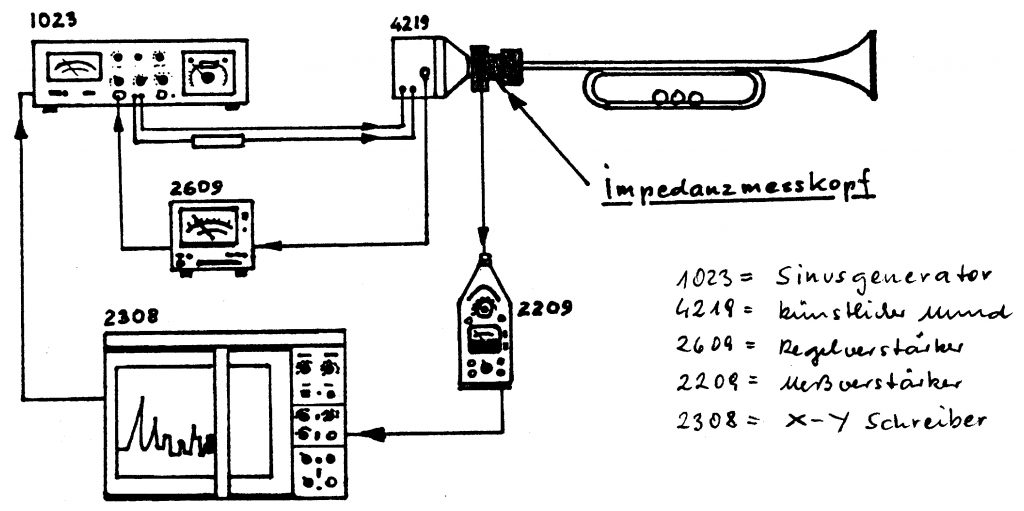
Analog measuring setup with Brüel&Kjaer devices for input impedance measurement.
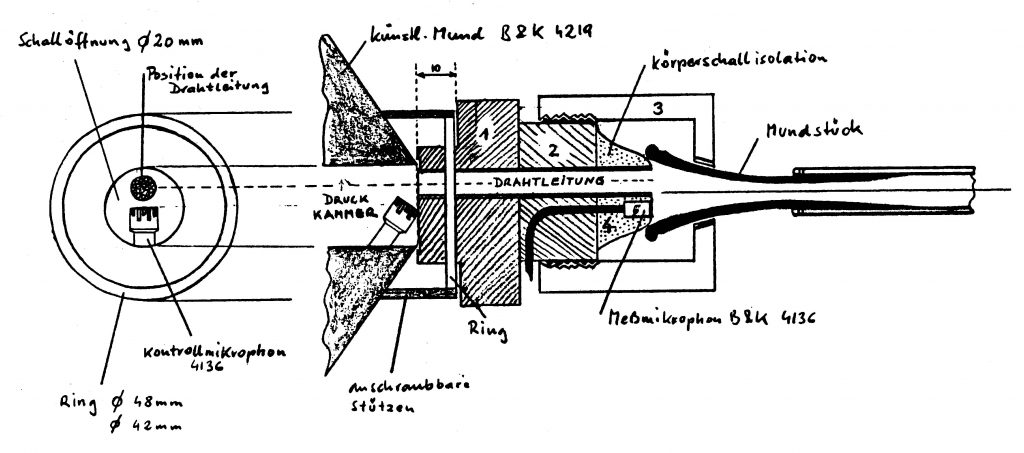
Detail: Coupling of the impedance measuring head to the instrument
With the use of a computer and a corresponding data acquisition board, which cost an additional 16,000 Shillings, things looked much better. I now had a hybrid system: The measurement signal and the measurement were analog, the data of the impedance curve were not, as before, fed to the analog X-Y recorder in the form of an electrical voltage, but were read directly into the PC via the DASH-16 data acquisition board. This enabled me not only to calculate and graphically display the intonation offered by the instrument, but also to use various mathematical methods to make some statements about intonation, response, and other characteristics of the instrument that were relatively well suited to playing practice.
I was always in good contact with the instrument makers, and although the Viennese instrument makers were happy to receive advice, but they did not question anything else and were not interested in how the findings came about. They were amazed by the technical equipment, but showed no further interest.
Swiss and German instrument makers, on the other hand, were very interested. But when they heard the price of the measuring setup devices, it was clear that such a measuring system was out of reach for them as a tool. But the thought of making such a system available to instrument makers as a contemporary tool in the future never left me.
In 1987 we were able to “pimp” the new Olivetti PC with a sinful expensive DSP board from the US company Burr Brown, which cost 56,000 Shillings and was inserted into an empty slot of the computer to such an extent that it was able to perform even more complex arithmetic operations in a reasonable time.
In 1989 the time had come. Meanwhile there were powerful processors available at reasonable prices and at the conference in Strbské Pleso I saw examples of high quality analog-digital and digital-analog converters which could be produced by myself with partly prefabricated boards. Then it was clear to me: we can and will provide interested instrument makers with a new tool at an affordable price!
It took another 2 years until we were ready with the hardware to replace the previously purchased AD and DA converters and the extremely expensive DSP board with a self-built subsystem. We packed all the electronics into a mini-computer case, which communicated with the PC via the then common parallel port. The PC itself only had to provide a display readable for musicians and instrument makers and to store the data.
However, we still used Brüel&Kjaer’s “artificial mouth” to stimulate the instrument. This had to be replaced by a proprietary development for cost and, above all, practical reasons (unwieldy regarding the coupling to the mouthpiece of the instrument). It took us another 2 years to develop a new measuring head and program a useful user interface (by now “Windows” was already available). After numerous prototypes we were finally ready to have a small series of the mechanical parts of our new measuring head manufactured by an instrument maker in Bavaria (Germany). He owned an unusually exquisite workshop equipped with the best CAD-CAM machines and brought in his know-how as a precision mechanic and instrument maker.
He was our first customer who bought the BIAS system in 1994 – of course at a greatly reduced price. The name “BIAS” was an invention of mine, because I called it “Brass Instrument Analysis System” and I liked the combination of the initial letters as short name. Unfortunately, it was not until years later, when we had already sold several systems to the USA, that I noticed that there is a word “bias” in the English language that does not necessarily have a positive connotation. But then it was already too late and we just have to live with it now.
 With the enormous increase in computing power from the turn of the millennium onwards and the advances in miniaturization of electronic components, subsystems were no longer necessary. All the additional electronics have migrated to the measuring head in the form of microprocessors, and the PC took care of the rest. In the near future, cables to a computer will no longer be needed either. The measuring head transmits the data to the notebook, tablet or cell phone via WLAN or Bluetooth.
With the enormous increase in computing power from the turn of the millennium onwards and the advances in miniaturization of electronic components, subsystems were no longer necessary. All the additional electronics have migrated to the measuring head in the form of microprocessors, and the PC took care of the rest. In the near future, cables to a computer will no longer be needed either. The measuring head transmits the data to the notebook, tablet or cell phone via WLAN or Bluetooth.
In the meantime, around 200 systems are in use worldwide at instrument makers, museums, universities and musical instrument making schools. The fear that if the system is successful on the market, the hardware will be copied, the software stolen via re-engineering and released on the market as a cheap copy has proven to be unfounded. In the measuring head and in the software is so much not recognizable KnoHow that it would took years to copy such a system marketable.
BIAS is still the first and only commercial system of its kind in the world.
Such and similar activities have earned me the honorable title “Founder of Musical Acoustics in Austria”. But it is also a fact that in 1999, with the establishment of a chair for musical acoustics and my appointment as full university professor for musical acoustics at the University of Music and Performing Arts Vienna, the first professorship of this kind was created worldwide.
In 1997 our team was expanded with Dipl.-Ing. Dr. Wilfried Kausel. Among other things, his many years of expertise in the optimization of chip designs at the US company Motorola gave the BIAS project a considerable boost in innovation. BIAS used to be a “Diagnostic System”, but with the conception and programming of an optimization software package called “BIOS” (Blas Instrumente Optimierungs System) he extended BIAS to a “Diagnostic & Therapy System” in 2001.
AAA – AUSTRIAN ACOUSTICS ASSOCIATION
Acoustics is an extremely transdisciplinary branch of physics. Numerous acousticians in Austria work in their special field as “lone fighters” unnoticed and, above all, outside of their field of expertise, mostly poorly networked, in the most diverse authorities, magistrates, government companies, research institutes and environmental organizations.
On various occasions I had contact with Prof. Dr. Ewald Benes, who as a physicist at the Vienna University of Technology was head of the department “Ultrasound”. Like me, he was of the opinion that communication in science and research has a high priority. To look beyond one’s own nose is immensely important, because you can learn a lot from other disciplines. We were both of the opinion that, in view of the hopelessly fragmented acoustic landscape in Austria, it was necessary to take the initiative to found an Austrian Acoustics Association (AAA), just as has long been the case in other countries, in order to make acoustics in our country visible.
So we systematically combed all of Austria to find acousticians. It turned out that there was no course of study in acoustics at Austrian universities and consequently no chair for it. Although acoustics was taught as an indispensable auxiliary science at many universities, partly in their own lectures and seminars, it was only ever taught in a targeted manner as an appendage to other areas of physics. We found most potential members of an Austrian Society for Acoustics to be founded in building and room acoustics, as well as in the field of noise control (road noise, railroad noise, etc.). In the Commission for Sound Research of the Austrian Academy of Sciences, we found a committed comrade-in-arms in Dr. Werner Deutsch, who, like the two of us, came from scientific research.
Since I already had sufficient experience in founding associations (Vienna Volksopera Orchestra, Capella Academica Vienna, Ensemble Eduard Melkus), as well as being a board member and treasurer of several scientific associations such as the AES (Audio Engineering Society), it was up to me to draw up appropriate statutes. I took the DEGA (Deutsche Gesellschaft für Akustik) as a model for an internal association structure that was sensibly arranged according to subject areas.
Before that, however, a problem arose that had to be solved with the appropriate tact and sensitivity: We discovered that in the environmental authorities of the state governments and the magistrates of the larger cities, there were people everywhere who were responsible for compliance with the legal guidelines in the areas of environment, building acoustics, noise protection, etc. These people met informally at regular intervals in the so-called “ÖAL” (Austrian Working Group for Noise Abatement) to draw up guidelines and to coordinate among themselves as best as possible the guidelines that were within the competence of the federal states. These meetings were financed by the corresponding authorities.
Due to our initiative for the establishment of the ÖGA/AAA uncertainty arose in the ÖAL, some feared a competition within Austria. In numerous discussions we could eliminate the fears, since we understood ourselves as umbrella organization, which would like to operate public work and lobbying for all in the acoustics active and promote international cross-linking. Because we already had the assurance of the EAA (European Acoustics Association) and the world umbrella organization ICA (International Commission of Acoustics) that the AAA as an association would be accepted as a member of both organizations and that each member of the AAA would be able to take advantage of all the benefits and services of the international organizations free of charge, we were able to convince many that it was worthwhile to join the new association.
And so in 1996 the ÖGA or AAA was founded, which will celebrate its 25th anniversary in 2021. In the meantime, some members of the AAA have become permanent members of the scientific and organizational management committees (boards) of the international umbrella organizations.
EXPERT COMMITTEE ACOUSTICS WITHIN THE ÖPG
Characteristic for the “invisibility” of acoustics in Austria at that time was the fact that within the ÖPG, the Austrian Physical Society, many fields of physics were represented by expert committees, but acoustics did not exist at all. The foundation of the Acoustics Committee was therefore only a logical consequence of the founding of the ÖGA/AAA.
ONLINE LITERATURE DATABASE for MUSIC ACOUSTICS
At the beginning of my work at the Institut für Wiener Klangstil, literature research was an important and, because there was no internet at that time, also a time-consuming matter. I only really found what I was looking for in the library of the Faculty of Natural Sciences at the University of Vienna located in the Boltzmanngasse.
There were not only the relevant textbooks, but also all relevant international journals. The JASA (Journal of the Acoustical Society of America) and the German-language journal “Acustica” were particularly productive, since both journals contained numerous research reports on the topics of psychoacoustics, physiological acoustics and musical instrument acoustics. I spent many days there, and the best part was that as a staff member of a university I was allowed to use the copiers available there free of charge, which enabled me to build up my own specialized library. At some point the user regulations were changed and the possibility of free copying was abolished. Instead it was now allowed to take the books and journals home for a few days. As a result I dragged large shopping bags full of “heavy literature” home and back to Boltzmanngasse for months.
With the rise of personal computers, I organized small “teaching assignments” to pay students or people who had already graduated, who then scanned the existing literature and stored it in a database. This was the basis of our later literature database.
The special feature of this database for music acoustics was that, in addition to the acoustics of musical instruments, psycho- and physiological acoustics, there was also the specialized literature on musical instrument making and historical instruments. With the triumph of the Internet, our database literally exploded and we had to change and reprogram the structure several times, or sometimes even have it programmed by extern companies.
From 2012 on we have put the database online. The easy access from home was not only practical for us, but was also appreciated and well received by the international scientific community.
By 2016, the database already contained almost 18,000 entries and the best part was that the majority of them were available in “full-text” and could be accessed immediately. A success story – as I thought.
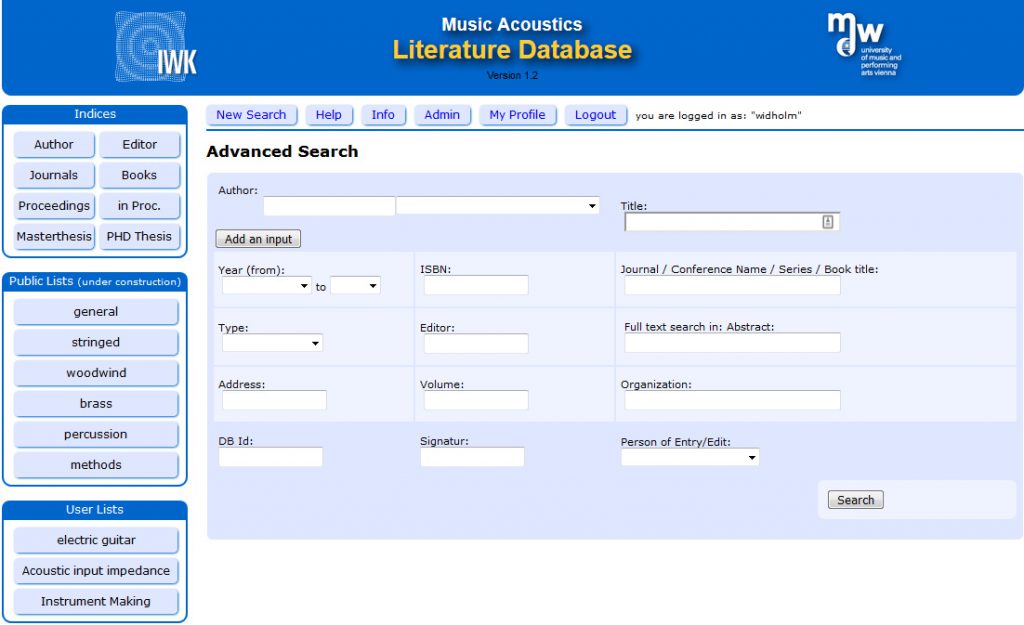
Unfortunately in 2018 a hacker attack on the servers of our university took place, which somehow seemed to have run over our literature database. Together with the competent staff of the ZID (Zentraler Informatik Dienst) of our university we tried to trace the hackers’ path in order to close possible security holes. Unfortunately, it turned out that a secure operation of the database would only be possible with high software and financial efforts – so we took it off the net with a sigh.
It is now no longer accessible to the general public, but only from computers of the institute or via VPN access. Moreover, the new European copyright laws would have caused us major problems anyway if we had been able to provide free access to the database via the Internet. Thus the supposed success story is now a thing of the past.
ILK – THE HEAD OF INSTITUTES’ CONFERENCE
(“Institute” in German language means in English “DEPARTMENT”)
With the “Bologna Reform”, which was adopted by the EU science ministers largely without the involvement of those affected, the existing structures of European universities were deliberately destroyed and completely new structures based on the Anglican model were established, but without creating appropriate framework conditions. The result was pure chaos. At the time, in 2002, the wicked saying went around that “a few drunken ministers met in Bologna and decided something they had no idea about, but hundreds of universities and millions of students would now have to pay for“. That was of course a bit exaggerated and pointed, but it hit the heart of the matter.
In the chaotic years that followed, the rectorates of the universities, now endowed with enormous power and authority, unintentionally ruled in an absolutistic manner, but at the same time in a clumsy and insecure manner. For example, they did not know how to deal with the newly created university council. Their behavior ranged from complete ignorance to fraternization. The funny thing about the situation was that the members of the university council, as the highest body of a university, usually did not know themselves what competencies they would now have and what they would not have. That is why the Ministry offered training courses for the new university councillors. Unfortunately, they were told there that they were something similar to a supervisory board in the private sector (the UOG read differently). Some of them then took actions that clearly exceeded their authority, were legally incorrect and had to be revoked.
In this temporary period of chaos – I was already a university professor and head of the Institut für Wiener Klangstil – I noticed that the concentrated expertise of the highly qualified teaching staff of a university could no longer be heard in the new structures – since it was not available in terms of organizational law. The Senate was only a weak substitute for the abolished collegial bodies due to its severely limited competencies. Even the heads of the institutes, who were usually appointed by the rectorate for an unlimited period of time, were completely on their own and had no contact persons other than the rectorate. Some were able to deal with this situation reasonably well, others less so. In any case, there was no exchange of ideas between them, which made “governing” much easier for the rectorate.
In 2004, when our rectorate again made decisions that did not suit me at all (it was about the allocation of infrastructure funds), I felt that this was too stupid and decided to create something like a “jour fixe”, where the heads of our institutes could meet regularly, report on their concerns and problems and help each other. I wrote an info mail to all of my colleagues at our university and obviously hit the nail on the head with my proposal. In their replies, all that mattered was the coordination of dates and where it would be best to meet.
One month later the first Jour Fixe started and was a complete success. At last it was possible to inform each other, learn how others deal with similar problems and get updated. It was especially pleasant to be able to talk openly in a small circle and call problems or grievances by name, because we were all in the same boat.
In the newly formed, naturally unofficial body, however, there was also a considerable amount of power contained in the executive power of the institute’s heads. This made the committee, which some time later was renamed the “Institute Heads’ Conference”, again interesting for the Rectorate. For there one could test the acceptance of various ideas or planned decisions in advance or explain the background to any decisions already made. I was elected as Primus inter pares as chairman of the ILK (“someone has to do it”) and held this position until I was elected vice-rector.
EMP IN CHINA
The prehistory.
Bai Lin, a Chinese businesswoman who is very well integrated and networked in Austria and who was appointed by the government as Austria’s special ambassador on the occasion of the 2010 World Expo in Shanghai, had organized a piano competition in the Austrian pavilion that covered the whole of China. The 9 best music universities in China were finally represented by one candidate each. Bai Lin asked me if I would chair the competition jury as vice rector of our university. I gladly accepted.
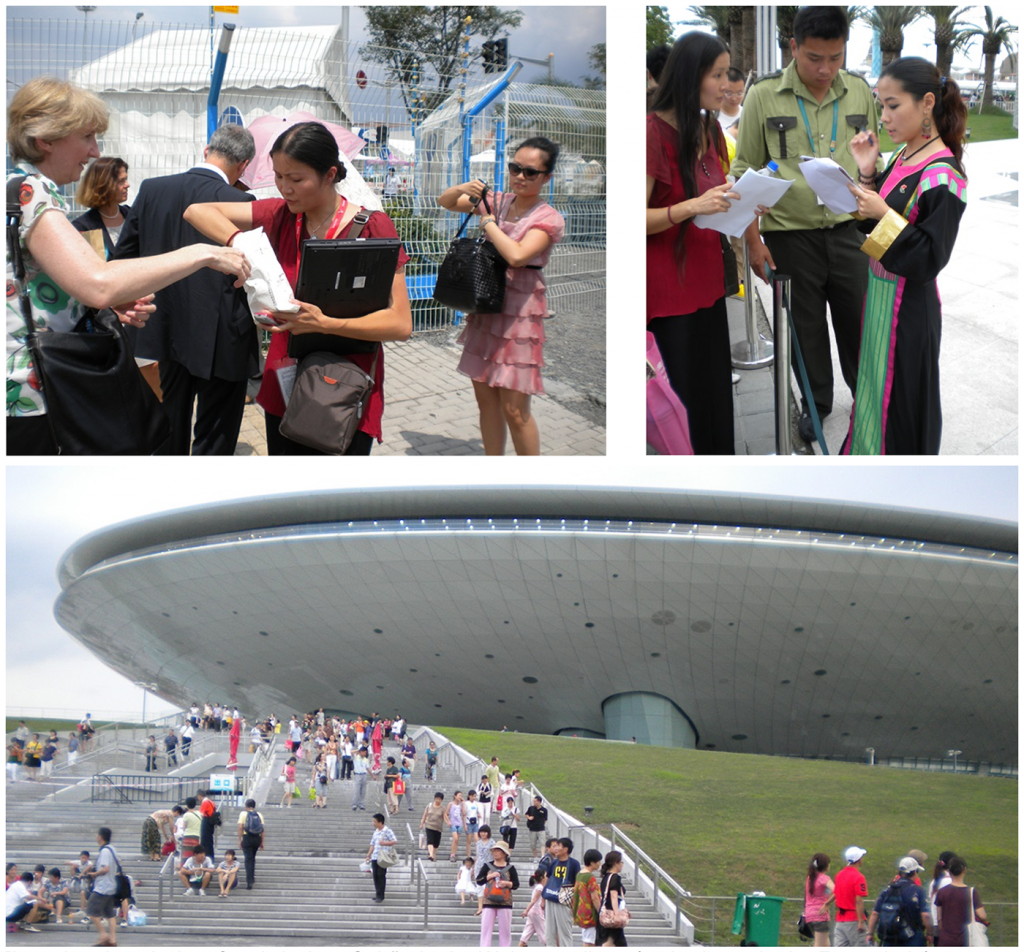
In conversations during the competition in Shanghai, it turned out that her son participated in the children’s groups that were run by the Institute for Music Pedagogy for the purpose of teaching practice in our house and she was totally enthusiastic about the work that is done there.
In China, early musical education at pre-school age and musical education in general has traditionally had a high priority. In order to get a place for your child in a school with a good reputation, auditioning with a musical instrument at a certain level is mandatory for the entrance examination (there are about 30 million piano students in China). However, the music school system has been completely privatized and is organized completely differently than in Europe. Municipal or provincial music schools are rather the exception.
To put it simply, the differences could be described as follows: in Elementary Music Pedagogy (EMP), which is the correct term, starting with the mother-child groups (1-2 year-old children) and ending with the 6-year-old children’s groups, there is little attention to the individual needs of each child. The lessons are usually held according to uniform guidelines, e.g. video cassettes with already prepared hourly contents. The flexible response to a changed mood within the group is not intended. This ability is neither taught nor encouraged in the training. To put it bluntly, one could say that the training of music teachers in China produces mostly female assembly line workers. Exceptions of course confirm the rule.
The idea. Some time after the end of the World Expo, Bai Lin said during a conversation in the course of the follow-up to the competition that now where she knows the way of teaching EMP in Vienna, she thinks it is a great pity that this method does not exist in China. Wouldn’t it be a good idea to export the EMP method developed in Vienna to China? This could also be advantageous for the University of Music.
Yes, I thought so – but how?
A short time later, she already had a potential partner at hand: “Hailun Pianos”, the largest private piano factory in China (35,000 pianos produced annually) runs almost 100 music schools throughout China through the Hailun Art Education Investment Co. My colleagues in the rectorate showed little interest in the idea of establishing our EMP method in China, especially the rector blocked the idea. He had no valid arguments – it seemed more like a decision “from the gut”. There was nothing to be done in this period of function and I put the idea on ice.
Then in 2015, in the course of the announcement of the position of a rector by the university council and its decision for a certain person from Germany, there was some heavy publicity turbulence from which Ulrike Sych emerged as the winner. I had just been emeritus a few months earlier and was actively involved in the matter.
Thus the idea “EMP for China” regained relevance and to my delight the new Rector and the Vice Rector for Education Barbara Gisler-Haase were interested in it. I was commissioned to develop a concept for a cooperation with China and the Vice Rector for Teaching and Promotion of high gifted children established the necessary contacts with the Institute for Music Education. After that, things went one step at a time.
Eva Königer put together a team of experienced EMP specialists who were willing and able to give training seminars in China. Already in December 2015 the founder and owner of Hailun Pianos, Chen Hailun, visited the university with his team and presented his company. In several rounds of talks, which took place in an extremely constructive and friendly atmosphere, the main features of the intended cooperation were fixed.
This was followed by the clarification of countless detailed questions and, after a “Letter of Intent”, the negotiations concerning the cooperation agreement. At the end of June 2016, the time had come and Gu Qing, daughter-in-law of the company founder and already active in various management functions at Hailun Pianos Company, signed the cooperation agreement in Vienna on behalf of Hailun Art Education Investment Co. together with the rector.
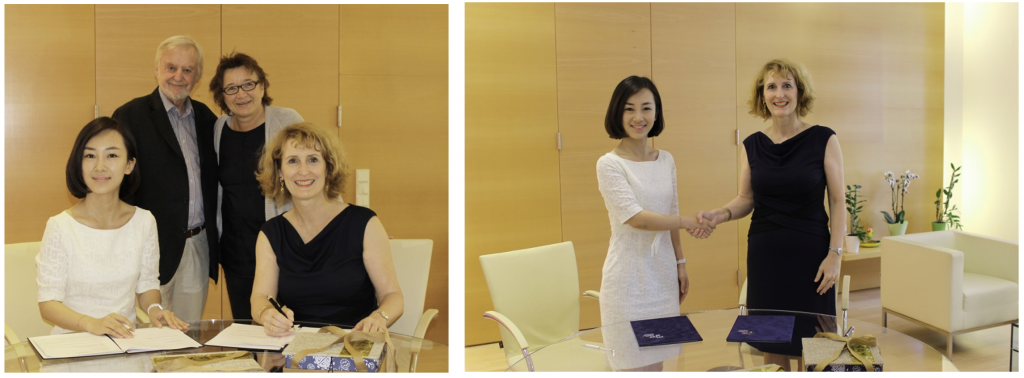
Signing the contract with GU Qing, Rector Ulrike Sych, Barbara Gisler-Haase and myself.
Immediately after the signing of the contract in Vienna I flew with GU Qing to Beijing to present the launch of the new cooperation in the presence of the Austrian ambassador to China at the annual “Beijing Music & Life Show”, which was currently taking place. The ambassador had a high affinity for music and found the project fascinating and important.
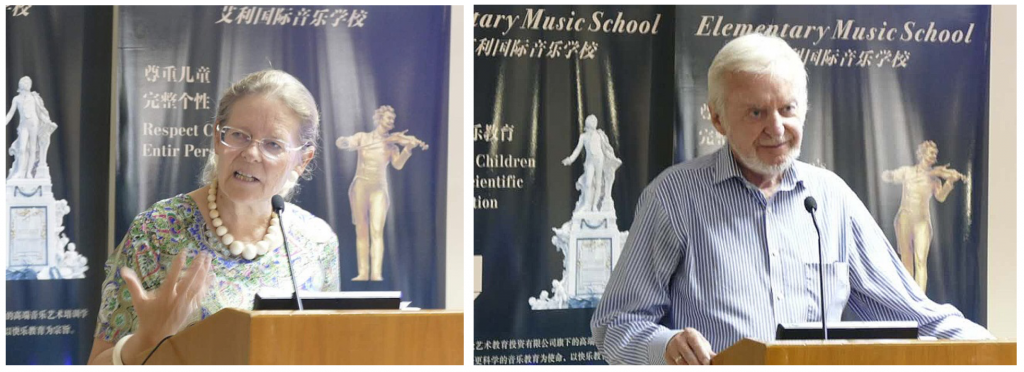
Address by the Austrian ambassador to China
The cooperation started well, but not without misunderstandings caused by probably different cultural socialization. Since there is good will on both sides, misunderstandings were always cleared up quickly – not least with the help of Bai Lin, who is at home in both mentalities. Although, in contrast to Japan, the Chinese are generally much more open and relaxed in their personal dealings, it can sometimes be difficult to implement a European-humanistic touch of individuality in structures that are characterized by the idea of performance and private economic constraints.
In the meantime, two new music schools in Ningbo (near Shanghai), which were intended as model schools, have been built. In 2018 Ulrike Sych and I were invited by the CMIA (China Musical Instrument Association) to give a keynote speech at the annual National Music Education Conference in Beijing.
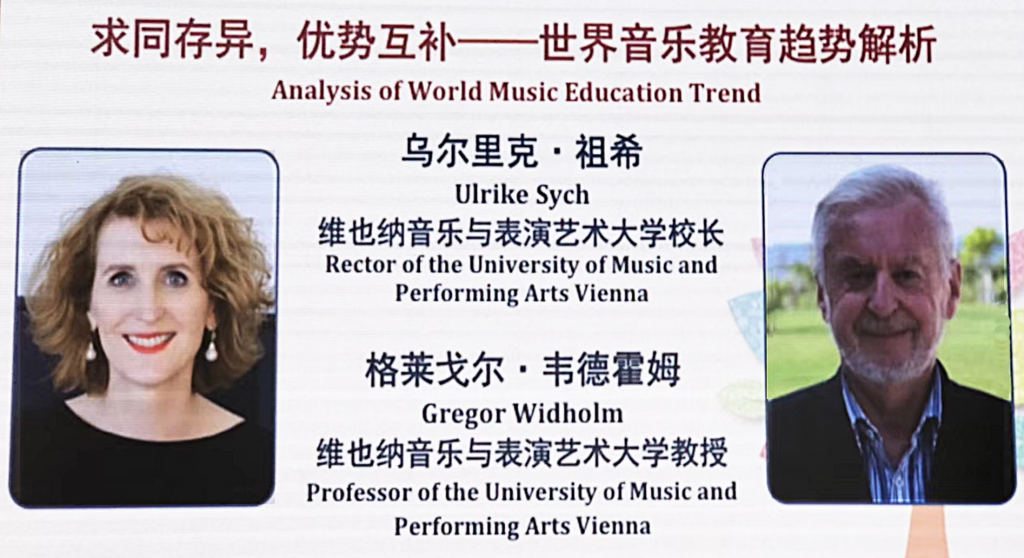
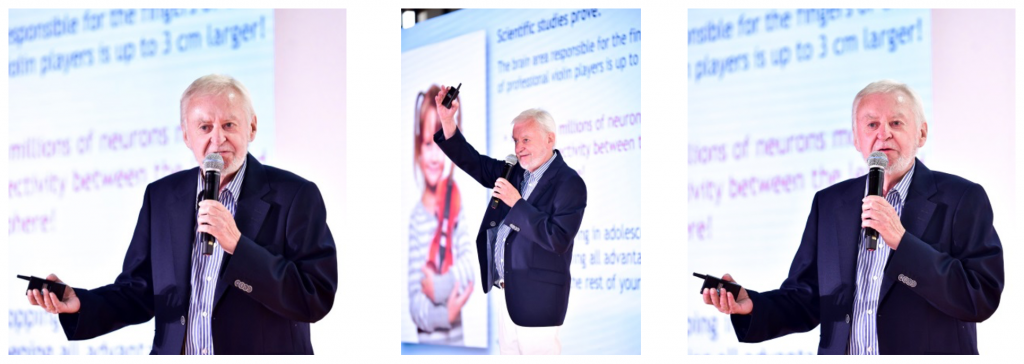

Unfortunately, Covid-19 and the associated travel restrictions have brought January 2020 to a certain standstill. One will have to wait and see how the project develops after Corona.
